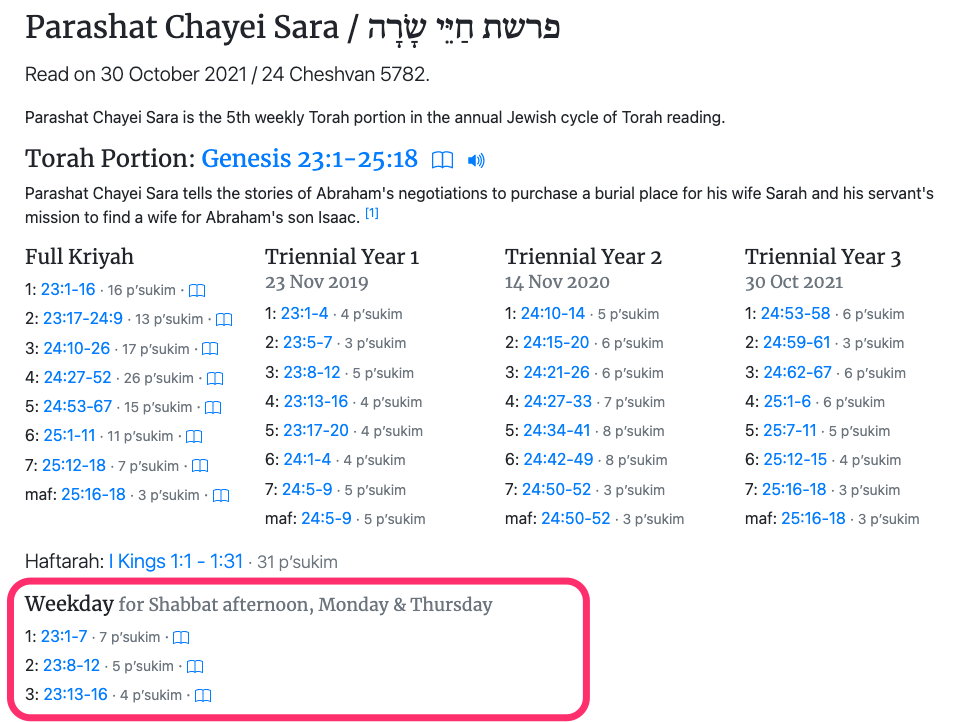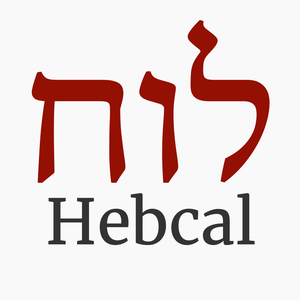Your comments
Hi, we have added weekday Torah readings to our parsha pages:

Mo'adim L'Simcha!
Hi, we have added weekday Torah readings to our parsha pages:

Mo'adim L'Simcha!
Update: the Hebcal Apple Watch beta has officially graduated to released status.
Download on the App Store here:
https://apps.apple.com/us/app/hebcal-hebrew-calendar/id1582733315
Hi, thanks for using Hebcal and thanks for your question. You are correct that Hebcal.com does not currently provide the Torah reading breakdown for the 3 weekday aliyot. This would be an excellent enhancement to the Hebcal website and we will add it to the TODO list. We will keep this ticket open until the feature is live on the website.
Hi, thanks for using Hebcal and thanks for your question. You are correct that Hebcal.com does not currently provide the Torah reading breakdown for the 3 weekday aliyot. This would be an excellent enhancement to the Hebcal website and we will add it to the TODO list. We will keep this ticket open until the feature is live on the website.
Hi David, we just released a public beta of Hebcal for Apple Watch. Please give a it try!
https://www.hebcal.com/home/3744/hebcal-for-apple-watch-beta
G'mar Chatima Tova / גְּמַר חֲתִימָה טוֹבָה
We wish you a good inscription in the Book of Life.
Hi, thanks for using Hebcal, and we're sorry to hear about the confusion on yahrzeit dates.
Do you know if your father passed away before or after sunset?
If your father passed away on Wed, 17 November 1999 before sunset, then yes, the date of death is 8th of Kislev, 5760
If your father passed away on Wed, 17 November 1999 after sunset, then the date of death is actually 9th of Kislev, 5760
When using the Yahrzeit + Anniversary calendar at https://www.hebcal.com/yahrzeit please be careful to select before sunset or after sunset.
Hi, thanks for using Hebcal!
Please double check your location (Diaspora vs Israel) and what setting you selected in Hebcal.
If you are located in Israel, Shmini Atzetet and Simchat Torah occur on the same day (the 22nd of Tishrei)
If you are located in the Diaspora, Simchat Torah follows Shmini Atzetet on the 23rd of Tishrei
https://www.hebcal.com/holidays/simchat-torah
Shana Tova and G'mar Chatima Tova!
Thanks for using Hebcal!
See this page for details
https://www.hebcal.com/home/48/download-aliyot-breakdown-of-torah-readings
Shana Tova!
Customer support service by UserEcho


Hi, thanks for using Hebcal on Alexa and thanks for the feedback!
The candle-lighting defaulting to Shabbos is a bug, and Havdalah is a feature that we never implemented. Both are excellent things to work on. We'll leave this ticket open and update when we get around to deploying a new Alexa skill that addresses these items.
Mo'adim L'Simcha!